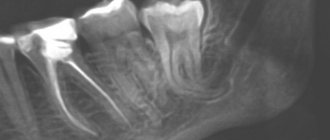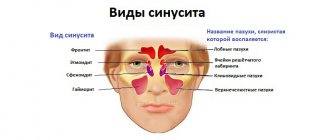12/10/2019 The main carriers of information for humans are signals that are generated by the senses, delivered to the brain and processed there. First of all, these are acoustic speech signals of the voice. In this article, we will take a closer look at the mechanisms of speech sound, voice and vocal production, and also find out why parrots can speak almost the same as humans.
Over the course of many millions of years of evolution, the sounds made by humans have turned into articulate speech. This significantly distinguishes us from other living beings on the planet. The meaningful use of speech sounds results in words and sentences that enable the exchange of information between people through language. Today people speak 7111 different languages, while not a single animal can do this. The human cerebral cortex contains many areas that are responsible for speech function.
Speech apparatus and speech
The human speech apparatus consists of the larynx, tongue, lips, as well as the cavities of the mouth, nose and pharynx. During speaking, the air moves and vibrates due to the directed interaction of the muscles involved in this process. If we didn't have a larynx, we could only speak in a whisper. If you place your finger on the larynx while speaking, you will feel a vibration that is not felt when we speak in a whisper. This vibration is created thanks to the vocal cords or folds, as they are sometimes called. The vocal cords are located in the middle part of the larynx. When inhaled air enters, they act like an organ pipe with spring reeds.
The vocal cords are a paired organ; they are stretched across the trachea (windpipe) and at the same time close it. (Figure 1) Thus, the glottis located between them is tightly closed.
Figure 1: The degree of opening of the glottis, depending on the actions performed.
When producing vowel sounds, the position of the tongue and its shape create a state of formant resonance.
During speaking, the glottis opens under the pressure of air coming from the lungs. When the glottis opens, there is a drop in air pressure and thus the glottis closes (Bernoulli's law). Again, air pressure is created under the vocal folds. This process is repeated continuously while speaking. The vocal cords experience mechanical vibrations.
There are a huge number of resonant frequencies with a fundamental original tone and overtones. Thanks to the vocal muscles, the tension force and thickness of the vocal folds change. As a consequence, there is a change in the main resonant frequencies. When the vocal cords are tense, high-pitched sounds are produced; when relaxed, on the contrary, low sounds are formed. When playing low sounds, the vocal folds vibrate slowly, while high sounds cause rapid vibrations.
The male larynx is significantly larger, and the vocal cords are approximately twice as long as those of women. Therefore, the male voice sounds about one octave lower. Hoarseness, viral infections, and smoking can damage the vocal cords. The voice of a person with a cold is like a low croak. Adult men who smoke often speak in a low, slurred voice that sounds like a wheeze.
Take a hearing test online
What does a hearing test tell you?
An online hearing test allows you to quickly and easily determine your hearing status. In just 3 minutes you can determine its spiciness. The result of the hearing test is called an “audiogram” and is an indication for doctor’s prescriptions.
We suggest the following hearing tests: signs of hearing loss; online frequency hearing test; hearing test in noise; speech recognition; modeling signs of hearing loss.
Take a hearing test
Voiced and unvoiced sounds
Above the vocal cords is the supraglottic tube (above the larynx). The extension tube consists of the pharyngeal cavity and the cavities of the mouth and nose. If you do not take into account the nasal cavity, the extension tube will look like a tube open on one side.
In this extension tube, the sound coloring of vowel sounds is formed from the hoarse, resonant noise that passes through the glottis. Actively changing the position of the tongue and lips changes the shape of the resonant cavity, as well as the length of the extension pipe. Thus, during speaking, the typical resonant frequencies of the tract, or formants, appear. The frequencies and amplitudes of these formants are the determining indicators when pronouncing vowel sounds. Ever watch carefully the movements of a news anchor's lips. You will learn based on the position of the mouth how lip reading works. When pronouncing [a], the mouth is slightly open, [o] and [y] are pronounced with elongated lips. Consonants are formed due to a certain position of the lips. In phonetics, a distinction is made between voiced and unvoiced sounds. (Figure 2)
Figure 2: An initial signal is generated in the vocal folds, which is transformed by resonances in the extension tube, so that it eventually becomes a language signal.
Dull sounds occur when the glottis is wide open, so that air can easily penetrate to the end of the vocal tract.
The difference between voiced and unvoiced sounds can be clearly seen by conducting two experiments: hold your hand while speaking on the larynx. If you feel vibration, the sound is ringing; if there is no vibration, then the sound is considered dull. The second experiment is to close your ears and press on the tragus on both sides and at the same time slowly say: “One, two, three, four, five...”. During acoustic isolation with a closed ear canal, you will notice the difference between dull and voiced sounds: soft noises and rattling vibrations.
Voiceless sounds - hissing (whistling) or fricative consonants and stops. During whispering, the vocal cords are used only indirectly. The air flow released during whispering is weak, and it creates small vibrations in the slightly open, calm glottis. These vibrations are acoustically perceived as quiet noise, completely devoid of sound design. In this case, there is no power and sound resonance enhancement of the vocal cords. In the extension pipe, in the same way as during sound voice production, the same resonances are formed, only they are much quieter.
Spectrogram
A spectrogram (sonogram) or visualized speech is a three-dimensional, visual representation of sounds in two-dimensional graphics. The sequence of signals is represented by a time index (abscissa and ordinate axis) and frequency (abscissa axis or longitudinal axis). Sound intensity is represented as relative darkening or color intensity scaling (third dimension) of the time and frequency images.
Reading and interpreting a spectrogram needs to be learned, since under certain circumstances an overabundance of information appears. In this way, it is possible to recognize the processes of establishment and attenuation of oscillations, interference, and even more so pathological changes in the functioning of the speech apparatus (Figure 3). The sonogram gives an idea of the sound study; the field of study is marked by the abscissa and ordinate axes. Sound reflection levels are measured using an acoustic probe, associated with a specific location in the field of study, and these areas are colored black depending on the intensity.
Figure 3: Spectrogram (sonogram) with the position of the formants of vowels i, u, a.
Talking Parrot
After this scientific excursion into the sound system of language and its analysis, I would like to tell you one more story. A good friend of mine was very proud to be a parrot owner. The African gray parrot (Grey parrot) was named Walter and was over 30 years old. Walter was a smart guy. He could repeat not only his own name and the name of my friend, but also quite quickly reproduced people’s addresses in full. In addition, he could say small sentences, such as: “I like you” or “You are a coward.” Tilting his head to the side, looking up and down with his captivating gaze, he presented his repertoire to selected visitors.
With his very loud and clear voice, he could whistle, so that his ears began to hurt. It played all sorts of sounds, such as a vacuum cleaner or a razor. Man and animal are capable of becoming close friends, and, of course, Walter managed to do this. He was very affectionate and snuggled against my friend’s cheek as they “chatted.” But at the same time he was timid and made a hell of a noise when he was excited. Walter lived in a very beautiful large enclosure with all kinds of toy rubbish, sometimes he flew out of there and swung on the chandelier.
One day on a bad spring day, Walter was sitting on a chandelier, and suddenly a strong gust of wind blew open the loosely closed terrace door. Walter, of course, panicked: he screamed and wheezed, and then flew out through the open terrace door. My friend, of course, heard the noise, but, unfortunately, came into the room too late. Walter is already gone...
Parrots can imitate speech sounds. In the wild, birds recognize each other by the characteristic sounds of their species. Many birds can not only whistle and sing beautifully, but also amazingly reliably imitate all kinds of noises.
How is this possible?
And birds have a larynx, but without vocal cords and an epiglottis. Birds produce sounds from the so-called lower larynx (syrinx), located deep in the chest, near the place where the windpipe divides before entering the lungs. Here there are oscillatory membranes, which, just like the vocal cords, can change their tension thanks to the muscles. Since the vocal organs of birds are located in two branches of the windpipe, some songbirds can sing with two voices. Listen to the nightingale singing one quiet summer evening - you will receive great acoustic pleasure! (Figures 4 and 5).
Figure 4: The avian larynx (syrinx) contains two glottis. Therefore, some songbirds can sing with two voices.
Figure 5: Walter the gray parrot could perfectly “pronounce” not only his name.
Parrots, for example, have a thick beak and a thick tongue, thanks to this (by changing the position of the tongue), they can, like humans, articulate a large number of sounds. This feature helped Walter. A very nice man found him and brought him to the police station. Walter reported there the name of his owner and his address. Walter expressed his joy at meeting his owner very loudly, imitating the sounds of a siren.
Summarizing
- Humans and many animals can form speech sounds.
- The development of sound speech is possible only in humans thanks to their mental abilities.
- The human speech apparatus consists of the larynx, tongue, lips, and also includes the oral cavity, nose and pharynx.
- Voiced sounds (vowels, umlauts, nasals, smooth consonants, fricative sonorants and obstruent consonants) initially arise from vibrations of the vocal cords, and then sound is formed in the supernatant (sound formants).
- Voiceless sounds (consonants, hissing and fricative consonants, as well as stops) arise without the participation of the vocal cords.
- A spectrogram (sonogram, visualized speech) is a graphical representation of signals that depend on the frequency of vibrations, the course of the process over time and intensity.
Ulla Vogdt Material taken from Hörakustik magazine, No. 1 2022.
Throat
Everyone knows that the human throat serves to conduct food and air. A person adapts to simultaneous swallowing of food and breathing immediately after birth, when, as an infant, he sucks on the breast or bottle. Subsequently, a person develops a relationship between swallowing, breathing and speech. If such reflex regulation is disrupted, there is a danger of food masses and other foreign bodies entering the respiratory tract. Swallowing, breathing and speech are carried out both involuntarily and consciously. They involve the entire apparatus of the pharynx and larynx, their muscles, nerves and vessels.
But breathing and swallowing are not all functions of the throat. The palatine tonsils located in the pharynx are important for the human body. The main function of the tonsils is the production of immunoglobulins in response to exposure to infectious agents and the formation of local immunity.
Another function of the throat is protective. In the mucous membrane of the larynx, near the entrance, there are sensitive nerve cells that respond to temperature, chemical and mechanical stimulation. The reaction of the larynx depends on what kind of air we inhale. If there is dust, gas or other impurities in it, the glottis contracts, and the main flow of oxygen into the lungs slows down considerably. An increased amount of impurities causes a reflex closure of the glottis - a spasm. Thanks to this mechanism, the lower respiratory tract is protected from saliva, food and foreign objects. A reflex cough is also one of the manifestations of the protective function of the larynx. They say that the person “choked.”
In addition to the respiratory and protective function, the larynx also has a voice-forming function. The throat is involved in speech production.
The structure of the human pharynx (throat).
The human throat consists of three “floors”. Nasopharynx, oropharynx and hypopharynx. In the nasopharynx, adenoids can be particularly distinguished, which often bother the youngest patients. In the oropharynx, attention is drawn to the palatine tonsils - formations lying on the sides of the uvula of the soft palate behind the posterior molars of the lower jaw. The palatine tonsils, or tonsils, are sometimes also called tonsils. The lower “floor” of the pharynx - the laryngopharynx - passes into the larynx and then into the trachea and bronchi. Behind the larynx lies the initial segment of the esophagus. The skeleton of the larynx consists of cartilage and ligaments. Muscles that move the cartilage of the larynx during breathing, swallowing and pronouncing sounds are attached to them.
Take a hearing test online
What does a hearing test tell you?
An online hearing test allows you to quickly and easily determine your hearing status. In just 3 minutes you can determine its spiciness. The result of the hearing test is called an “audiogram” and is an indication for doctor’s prescriptions.
We suggest the following hearing tests: signs of hearing loss; online frequency hearing test; hearing test in noise; speech recognition; modeling signs of hearing loss.
Take a hearing test
Read more on the topic “Useful information about hearing”
Why you don't need a hearing aid
The Academy of Hearing has been working with people suffering from hearing loss for over ten years. During this time, we have collected a whole collection of rumors, myths and misconceptions that surround this disease and the means of its correction - a hearing aid. We collected the most popular ones and asked our experts to comment on them in an easy, understandable and ironic way of “bad advice.”
Tinnitus: causes, treatment methods, consequences
Tinnitus is a widespread phenomenon and one of the most common diagnoses in the practice of treating ENT diseases. In 1999, in Germany, on behalf of the German League of Physicians, a large study was conducted in the field of auditory acoustics, during which it was found that tinnitus entails psychosomatic disorders such as sleep disturbances, depression and increased audiological stress.
How often should you change your hearing aids?
Do you remember what feelings and emotions you experienced when you first put on your hearing aid? How much brighter and more fulfilling has your life become, filled with clear sounds and voices? If several years have passed since then, are you sure that your hearing is still as good? Often, people who use hearing aids begin to notice over time that they begin to hear “somehow differently.”
Hearing aid or hearing amplifier: making the right choice!
Typically, a person loses their hearing gradually. First, the quietest, most inexpressive sounds and subtlest nuances “disappear.” Because of this, it is difficult for a person to ascertain a change in his ability to hear. Quite often, people try to ignore minor hearing loss until the truly important sounds for everyday life, such as the cry of a child or the sound of a car approaching, begin to disappear from the range of audible sounds.
We care about your health
Pharyngitis is an inflammation that is localized on the mucous membrane and lymphoid tissue of the pharynx. Since this disease is usually of infectious origin, it is usually accompanied by symptoms of upper respiratory tract dysfunction. If signs of illness occur, it is recommended to immediately contact an experienced ENT specialist. Thanks to this, you will be able to prevent the development of complications.
Pharyngitis (acute, chronic) - symptoms in adults and children
Pharyngitis is accompanied by severe inflammation in the pharynx area, which is associated with increased activity of pathogenic microorganisms. The development of the disease can be caused by cytomegalovirus or Epstein-Barr virus, which are viable at low temperatures.
Infection of the pharynx by these microorganisms usually occurs as complications of diseases of the ENT organs. Acute inflammation often spreads to the tonsils, creating a large lesion.
If treatment for this disease is not started in a timely manner, it will become chronic. In such cases, coping with pharyngitis can be quite difficult.
Pharyngitis - photo of the throat with disease
Photograph of the throat with acute pharyngitis
Photograph of acute infectious pharyngitis
Causes of pharyngitis
The development of pharyngitis can be caused by inhalation of cold air, as well as exposure to various irritants - alcoholic beverages, cigarettes. The infectious form of the disease is a consequence of infection with various microbes - staphylococci, pneumococci, streptococci. Pharyngitis can also develop when infected with various viruses and fungal infections.
Often the disease becomes a consequence of infection from other organs adjacent to the pharynx. Very often the inflammatory process is the result of rhinitis, sinusitis or caries.
Provoking factors include the following:
- prolonged hypothermia;
- weakening of the immune system;
- prolonged irritation of the mucous membrane;
- infectious processes in the body;
- eating cold foods.
People of any age are at risk, but pharyngitis is most often diagnosed in children and patients with weak immune systems. If therapy is not started in a timely manner, a chronic form of the disease may develop.
Symptoms of pharyngitis in adults and children
The general condition of people suffering from pharyngitis usually remains normal. Sometimes the temperature rises, increased drowsiness or slight malaise appears. Local symptoms include discomfort in the throat, dryness, soreness, and the sensation of a foreign object in the throat. Subsequently, pain of moderate intensity occurs.
If there is pronounced swelling in the throat area, the pain syndrome spreads to the ears, which provokes a feeling of stuffiness. Also, against the background of a sore throat, a dry cough may appear. As the pathology develops, it acquires a productive character.
Since pharyngitis is an inflammatory process, a reaction from the lymphatic system may occur. As a result, there is a slight increase in the anterior cervical lymph nodes and slight pain when palpating them.
With a severe viral infection, a person may have more pronounced signs of intoxication of the body. In addition to pharyngitis, symptoms of dysfunction of other organs often appear - for example, laryngitis or tracheitis.
With an exacerbation of the chronic form of pharyngitis, the patient’s well-being remains normal. In this state there are no symptoms of intoxication, in addition, the temperature usually remains normal. The chronic disease is accompanied by increased dryness and a feeling of a lump in the throat. Sometimes there is a slight cough.
What does Pharyngitis look like?
Pharyngitis - what does the throat look like when it’s sick?
Photo of pharyngitis
Treatment methods for pharyngitis - acute and chronic
For therapy to be truly effective, an accurate diagnosis must be made in time. To do this, you should consult with an ENT doctor who will examine the oral cavity. To determine the type of pathogen, a specialist will take a swab from the throat.
If the patient's general condition remains normal, treatment of pharyngitis should be symptomatic.
It usually includes the following components:
- gentle diet;
- compresses on the neck;
- gargling;
- inhalation;
- hot drink;
- warm foot baths.
Mild forms of the disease do not require the use of antibiotics. In this case, local antimicrobial therapy is indicated. The doctor may also prescribe antiseptic, anti-inflammatory and painkillers.
To determine the treatment method and select the right drug, the ENT specialist must focus on the following criteria:
- wide spectrum of action of the drug;
- low degree of absorption of the active substance from the mucous membrane;
- low allergenicity;
- no irritation to the throat;
- no toxic effect.
ENT clinic Medkvadrat is an effective treatment for pharyngitis in Moscow, Kurkino and Khimki. We will quickly and effectively cure pharyngitis. Make an appointment with an ENT specialist.
Prevention of pharyngitis
To prevent the development of acute pharyngitis, it is necessary to exclude hypothermia. It is also very important to avoid irritation of the pharyngeal mucosa with agents of nutritional origin. To prevent this disease, general hardening of the body with cold should be carried out, timely sanitation of the oral cavity should be ensured, and inflammation of the nasopharynx should be treated in time.
To prevent the occurrence of chronic pharyngitis, it is necessary to exclude exposure to negative factors on the body. These include smoking, eating irritating foods, and air pollution. Adequate treatment of pathologies of internal organs and metabolic disorders in the body is of no small importance.
Pharyngitis is a fairly common disease that is accompanied by inflammation in the pharynx and causes unpleasant symptoms. To prevent negative health consequences, you need to prevent this disease. If symptoms do appear, you should immediately consult a specialist.
You can make an appointment at a convenient time by phone. + 7
Overview video of the Medkvadrat ENT center in Moscow, Kurkino and Khimki:










